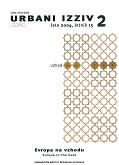Clustering with limitations as a method of regionalisation (case study: forming problem regions in Slovenia)
Clustering with limitations as a method of regionalisation (case study: forming problem regions in Slovenia)
Author(s): Simon KušarSubject(s): Social Sciences
Published by: Urbanistični inštitut Republike Slovenije
Keywords: quantitative methods; clustering with limitations; region homogenous region; regional planning; regionalization
Summary/Abstract: Regionalisation is a procedure that enables the creation of regions. Clustering with relation limitation can be used as s a method for the creation of homogenous regions that are spatial units characterized by internal homogeneity and geographical contiguousity. Certain problems are associated with the application of areas with special developmental problems in Slovenia. An attempt has been made to overcome them by clustering municipalities (NUTS 5), which have the same combination of types of problem areas, and by the formation of problem regions as the spatial units for assuring place prosperity. According to the Slovene regional policy, the results of clustering should better be called problem sub-regions, since they are smaller than statistical regions (NUTS 3), which are used as spatial units for the creation of regional development programmes. Problem sub-regions can be used as the spatial basis for creation of joint development programmes, and as such can be used in practice as well.
Journal: Urbani izziv
- Issue Year: 15/2004
- Issue No: 2
- Page Range: 87-92
- Page Count: 6
- Language: Slovenian

